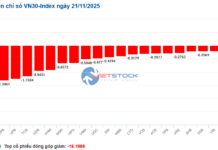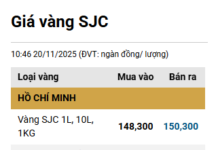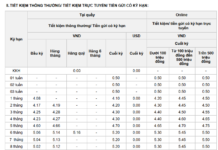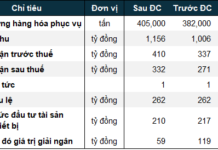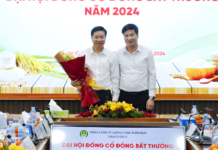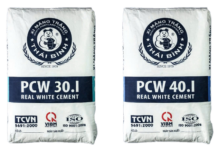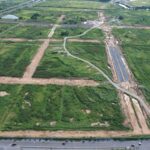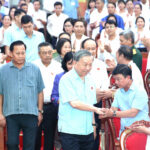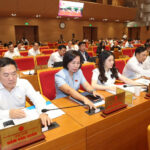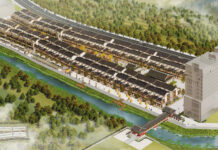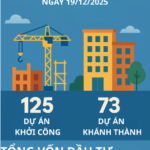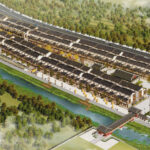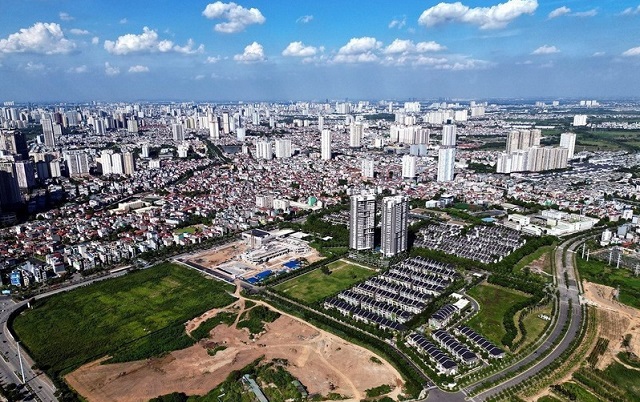
This procedure consists of 16 steps, starting with the land management agency establishing a land price table construction project, defining content, timeline, and budget. (Image: Tuan Anh/TTXVN)
|
According to Decision 3969/QD-BNNMT on the promulgation of new internal administrative procedures; amendments and supplements in the land sector under the state management function of the Ministry of Agriculture and Environment, there are 4 new internal administrative procedures and 3 amended procedures.
The decision also amends and supplements 3 procedures under the ministry’s functional responsibilities, including: 2 provincial-level procedures for the sequence and procedures of constructing the land price table for the first time to be announced and applied from January 1, 2026, and adjusting, amending, and supplementing the annual land price table for announcement and application from January 1 of the following year, and the procedure for determining specific land prices for cases under the authority of the Chairman of the Provincial People’s Committee; 1 commune-level procedure for determining specific land prices for cases under the authority of the Chairman of the Commune People’s Committee.
In the procedure for constructing the land price table for the first time and adjusting it annually, the decision-making authority for the land price table shifts from the Provincial People’s Committee to the Provincial People’s Council.
This procedure involves 16 steps. The first step is for the land management agency to establish a land price table construction project, defining content, timeline, and budget. Next, prepare the appraisal dossier and submit it to the Department of Finance for appraisal. The Department of Finance is responsible for appraising and sending the appraisal document for the land price table construction project back to the land management agency.
The land management agency then incorporates the appraisal feedback and submits the land price table construction project dossier to the Provincial People’s Committee. The Provincial People’s Committee directs relevant departments, localities, and management boards to implement the project.
Additionally, the provincial land management agency decides to commission or assign tasks to a qualified public service unit for land price consulting or selects a land price consulting organization in accordance with the Law on Bidding to construct the land price table.
The next step involves the Department of Finance submitting the composition of the Land Price Appraisal Council to the Chairman of the Provincial People’s Committee as stipulated in Article 161 of the Land Law to appraise the draft land price table. Subsequently, the Department of Finance submits to the Chairman of the Appraisal Council the decision to establish the Council’s Working Group.
The step of conducting land pricing to construct the land price table is detailed. It includes surveying, investigating, and collecting information to serve the construction of the land price table by area and position. The construction of the land price table down to each land plot is based on value regions and standard land plots, identifying land types, areas, and positions in each commune or ward for areas where the land price table is constructed by area and position. It also involves identifying land types, the total number of land plots, and the number of plots for each land type in areas where the land price table is constructed down to each plot based on value regions and standard land plots.
Based on this, the results of surveys, investigations, and information collection are synthesized and finalized at the commune and provincial levels. The implementation results of the current land price table are analyzed and evaluated for constructing the land price table by area and position.
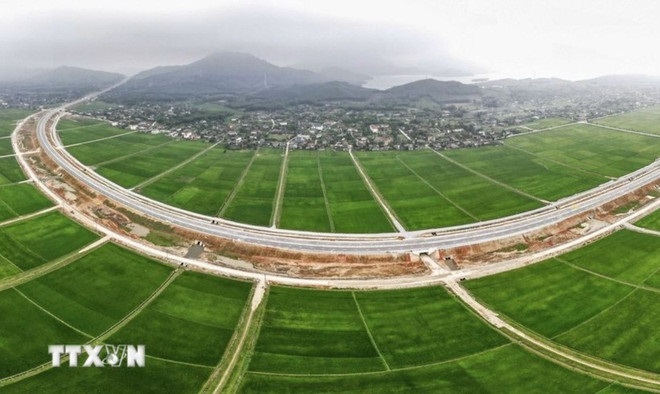
(Source: TTXVN)
|
Furthermore, the results of surveys, investigations, and information collection are synthesized; value regions are established; standard land plots are selected, and prices for standard land plots are determined. A comparison table is created for constructing the land price table down to each plot based on value regions and standard land plots.
From this, a draft land price table and a draft explanatory report for the land price table construction are developed. This step is of significant interest to many local authorities.
The next step in constructing the land price table for the first time at the provincial level involves the land management agency performing several tasks: drafting a submission for the promulgation of the land price table; posting the dossier for public comment on the Provincial People’s Committee’s website and the land management agency’s website for 30 days; collecting written feedback on the draft land price table; incorporating and finalizing the draft submission for the land price table’s promulgation; and directing the incorporation and explanation of feedback to finalize the draft land price table and the explanatory report.
Subsequently, the land management agency submits the draft to the Land Price Appraisal Council. After the Council appraises the land price table and sends the appraisal document back to the land management agency, the agency incorporates the feedback, revises the draft, and submits it to the Provincial People’s Committee for submission to the Provincial People’s Council for decision.
The Provincial People’s Council’s decision on the land price table is the 13th step. Following this, the land management agency publicly announces and updates the land price table into the National Land Database. Within 15 days of the decision, the Provincial People’s Committee sends the results to the Ministry of Agriculture and Environment.
The final step is that if necessary, the Provincial People’s Council decides to adjust, amend, or supplement the land price table during the year, applying some or all of it according to the sequence stipulated in Decree No. 151/2025/ND-CP of the Government on the delineation of authority of local governments at two levels, devolution, and decentralization in the land sector.
In addition to the 16 steps for constructing the land price table for the first time at the provincial level, according to the Ministry of Agriculture and Environment’s guidance, communes implement 3 new internal procedures for land recovery.
The three new procedures at the commune level include: Land recovery for households, individuals, and community residents in cases of violations of land laws as stipulated in Article 81 of the Land Law; land recovery due to termination of land use according to the law, voluntary return of land, threats to human life, or inability to continue using the land as stipulated in clauses 1, 2, and 3 of Article 82 of the Land Law; and land recovery for cases specified in clause 1 of Article 48 of the Land Law.
At the provincial level, an additional new procedure is implemented for land recovery involving domestic organizations, religious organizations, affiliated religious organizations, overseas Vietnamese, foreign organizations with diplomatic functions, and foreign-invested economic organizations in cases of violations of land laws.
Thu Hang
– 11:37 03/10/2025
Restoring Land Prices to Their True Market Value
The government should implement an anti-speculation tax, imposing progressive taxation on vacant land or short-term transactions.
Proposed Land Price Schedule and Adjustment Coefficients Effective January 2026
The Ministry of Agriculture and Environment has recently proposed a land price framework to address challenges and obstacles in the implementation of the 2024 Land Law.
$1.036 Billion Allocated for Land Clearance of Gia Binh Airport-Hanoi Road Link
The Hanoi People’s Council has approved an increase in the total investment for the land acquisition and site clearance project of the road connecting Gia Binh Airport to Hanoi. The budget has been raised from VND 6,420 billion to VND 7,457 billion, reflecting an additional VND 1,036 billion. This adjustment aims to incorporate the 1.62km segment, previously stuck between Hanoi and Bac Ninh, into Component 1 of the project.

